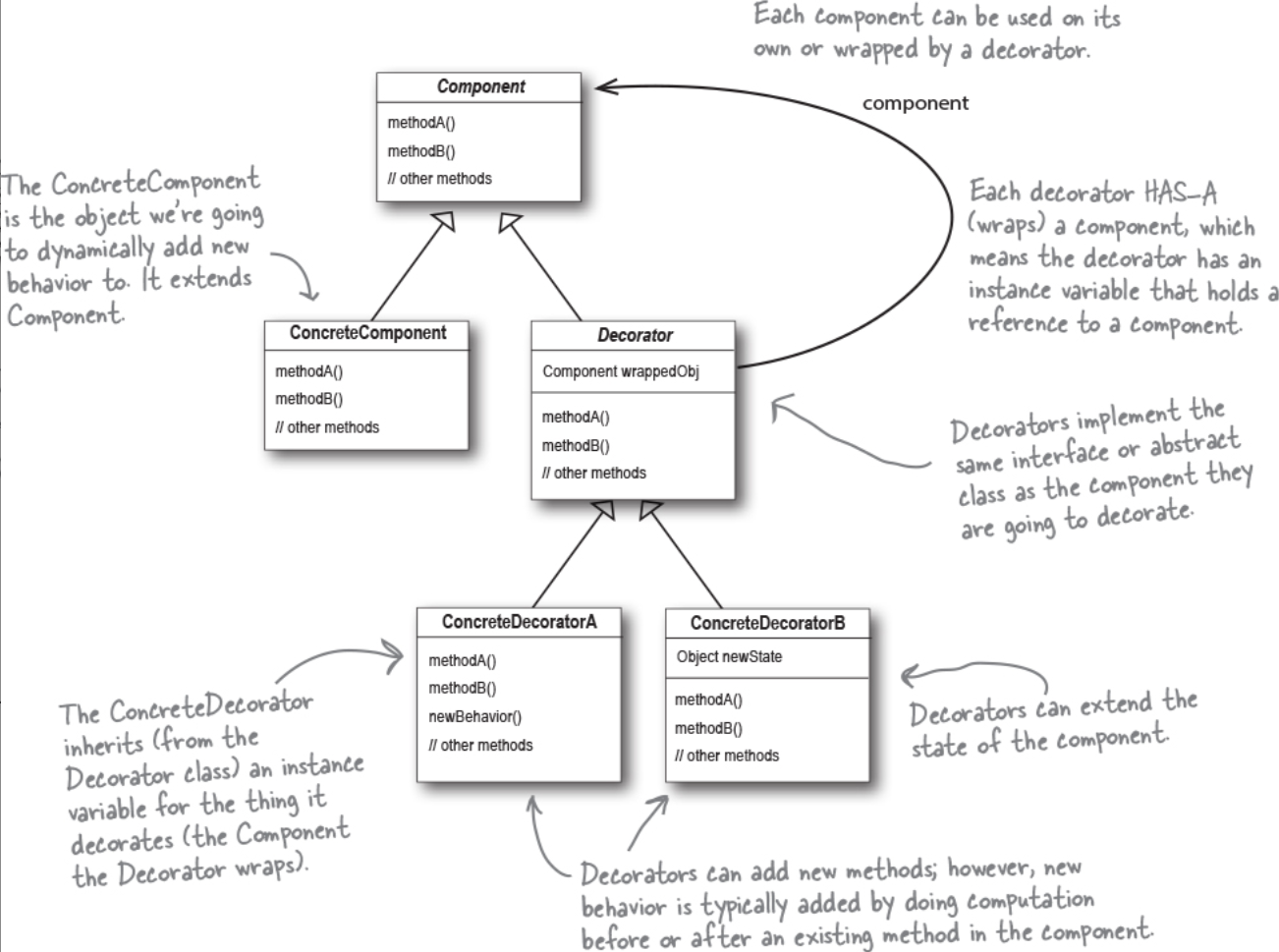The Open-Closed Principle
Meet the Decorator Pattern
- Decorators have the same supertype as the objects they decorate.
- You can use one or more decorators to wrap an object.
- Given that the decorator has the same supertype as the object it decorates, we can pass around a decorated object in place of the original (wrapped) object.
The decorator adds its own behavior before and/or after delegating to the object it decorates to do the rest of the job.
The Decorator Pattern defined
The Decorator Pattern attaches additional responsibilities to an object dynamically. Decorators provide a flexible alternative to subclassing for extending functionality

public abstract class Beverage {String description = "Unknown Beverage";public String getDescription() {return description;}public abstract double cost();}
public abstract class CondimentDecorator extends Beverage {Beverage beverage;public abstract String getDescription();}
```java public class Espresso extends Beverage {
public Espresso() {
description = "Espresso";
}
public double cost() {
return 1.99;
} }
public class HouseBlend extends Beverage { public HouseBlend() { description = “House Blend Coffee”; }
public double cost() {return .89;}
}
```javapublic class Mocha extends CondimentDecorator {public Mocha(Beverage beverage) {this.beverage = beverage;}public String getDescription() {return beverage.getDescription() + ", Mocha";}public double cost() {return .20 + beverage.cost();}}public class Soy extends CondimentDecorator {public Soy(Beverage beverage) {this.beverage = beverage;}public String getDescription() {return beverage.getDescription() + ", Soy";}public double cost() {return .15 + beverage.cost();}}


